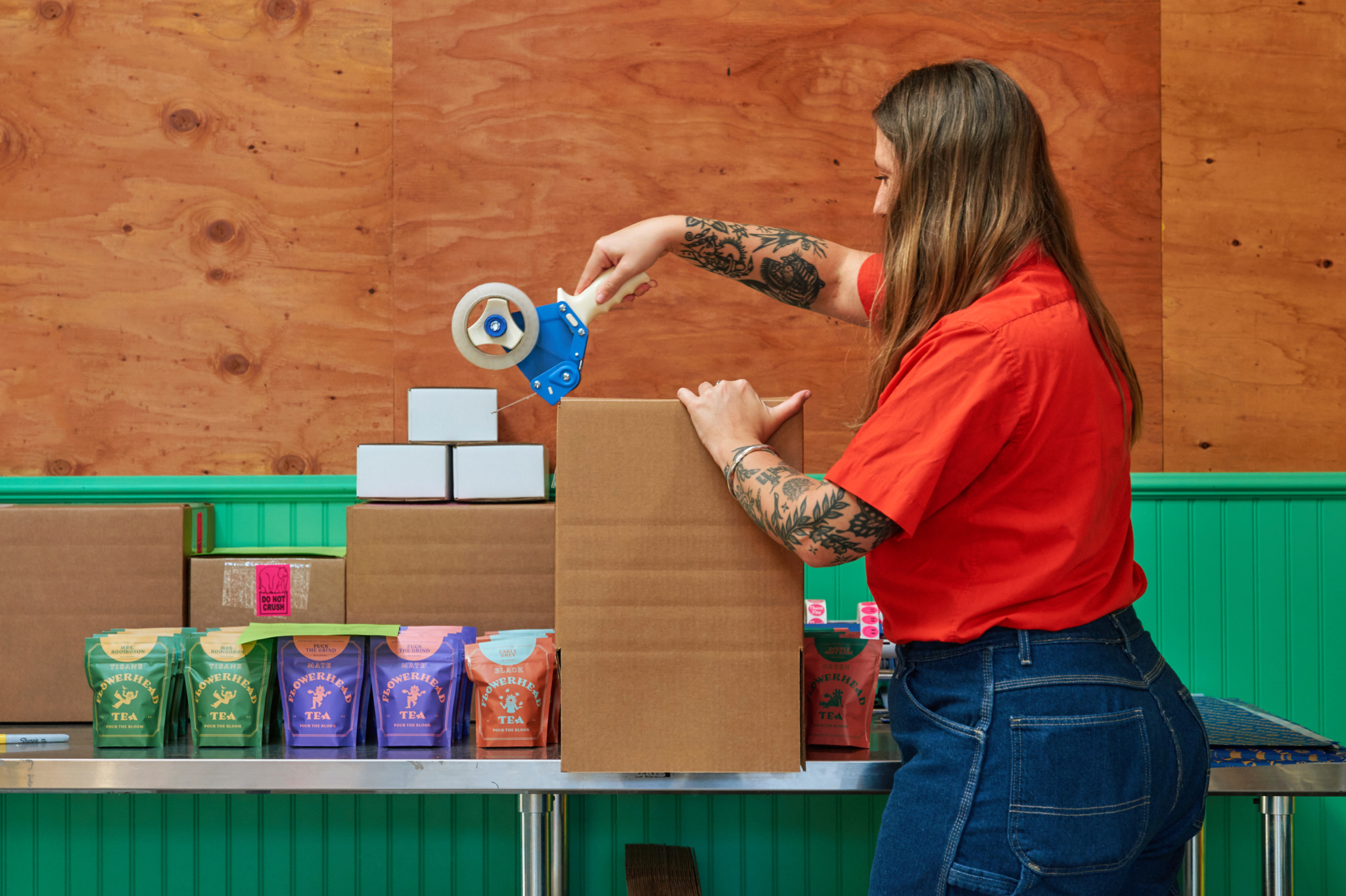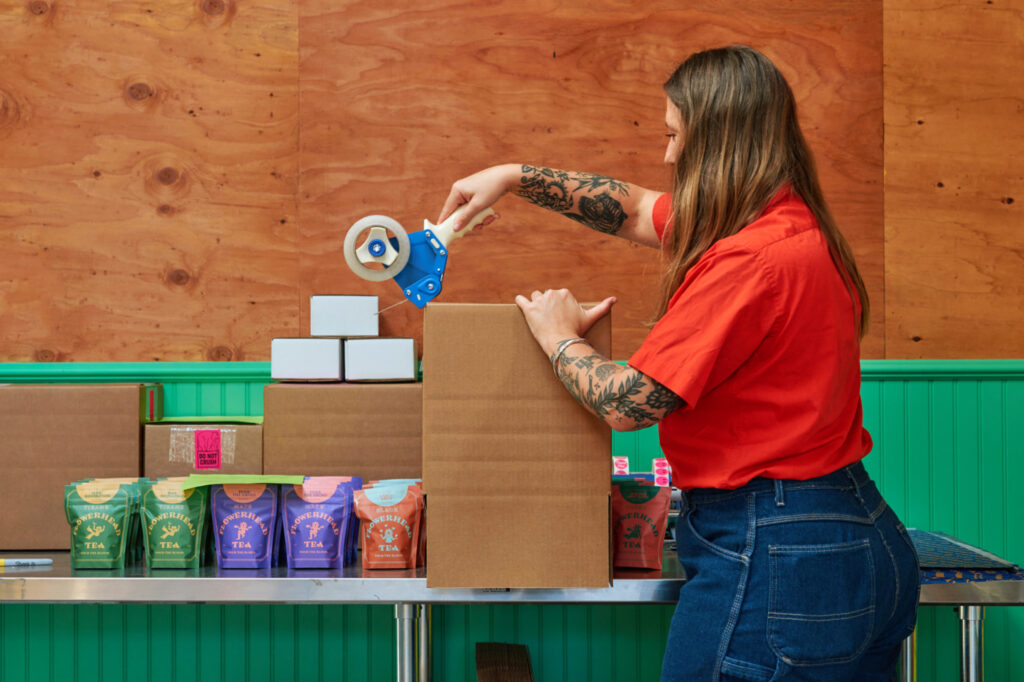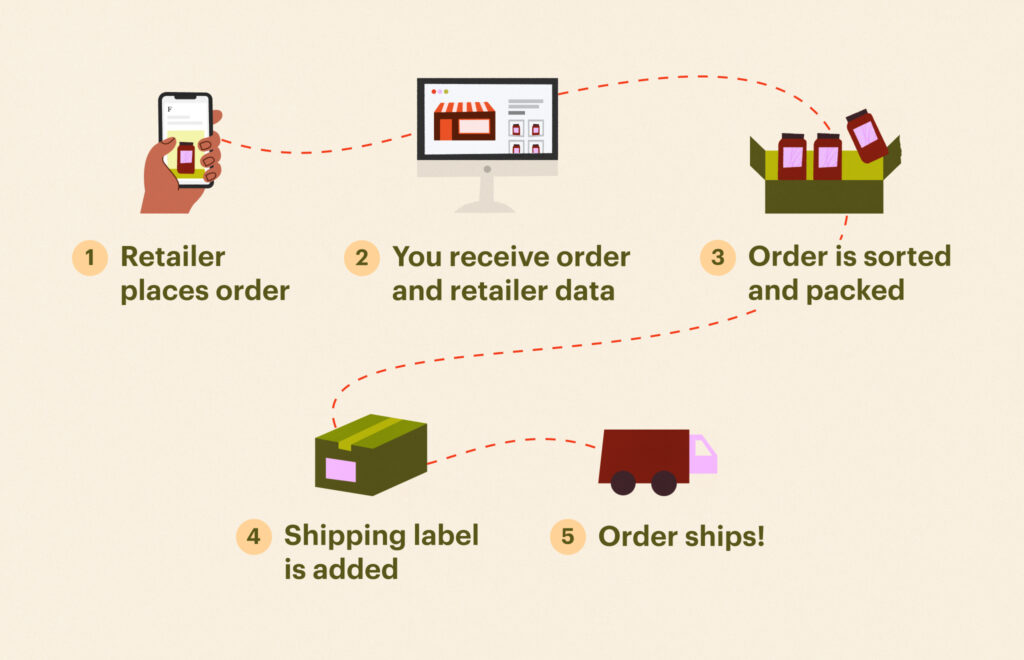

To understand the importance of order fulfillment, imagine you’re an online retailer who sells luxury linen blankets. You decide to try out a new wholesaler and order a few cases of blankets from them. Though the wholesaler promised speedy delivery, you waited two weeks longer than you were supposed to. And when the boxes finally arrive, something’s wrong. The blankets you selected were sage green, but navy blue ones were sent instead. You now have to deal with their slow-to-respond customer service to correct your order. You resolve to never use this wholesaler again and warn other retailers you know to stay away.
That’s the power of order fulfillment. According to a report from Salesforce on the state of the customer experience, nearly half of customers said they would take their business elsewhere after a negative experience and 62% would have no problem sharing their negative experiences with others. Order fulfillment can be an element that differentiates your business, or it can drag you down. Today, we’re sharing best practices for how you can get order fulfillment right.
What is order fulfillment?
Order fulfillment is everything that happens from the time someone clicks “Purchase” on an e-commerce site to when they excitedly rip into the package on their doorstep. To put it plainly, it’s the logistics of how and when a buyer receives their order from a seller.
Understanding order fulfillment models
As a brand serving independent retailers and boutiques, choosing the right fulfillment model is crucial for maintaining relationships with your retail partners. Here are the main approaches to consider:
In-house fulfillment
Many boutique brands start by handling fulfillment themselves, managing everything from inventory to shipping from their own space. This hands-on approach gives you complete control over the unboxing experience retailers receive.
Best for:
- Artisanal brands with handcrafted products
- Jewelry designers and other makers of specialty items
- Small-batch producers who need careful quality control
- Brands with custom packaging or personalization options
Third-party fulfillment
As your brand grows and more boutiques discover your products, you might partner with a third-party logistics (3PL) provider. They’ll handle storage, picking, packing, and shipping, allowing you to focus on product development and retailer relationships.
Best for:
- Brands with steady wholesale orders from multiple retailers
- Seasonal items (like holiday decor) that need flexible storage
- Brands expanding beyond their local market
- Products with consistent packaging requirements
Drop-shipping
While less common in boutique wholesale, some brands use drop-shipping for specific situations. In this model, you coordinate directly with your manufacturer to ship orders to retailers.
Best for:
- Large or bulky items (like furniture) that are costly to store
- Made-to-order products
- Limited-edition collections
- Testing new product lines with retail partners
Hybrid fulfillment
Many successful boutique brands find that combining approaches works best. For example, you might handle specialty orders in-house while using a 3PL for standard wholesale fulfillment.
Best for:
- Brands with both standard and custom product lines
- Those balancing direct-to-consumer and wholesale operations
- Seasonal businesses with varying inventory needs
- Brands serving both local and national retailers
What does it mean to fulfill an order?
Order fulfillment is a critical responsibility for any online store, and it can impact your store’s reputation. If a product is packed poorly and breaks in transit or an incorrect item is shipped or it just takes longer than promised to reach its destination, then you fail to meet customer expectations, and that customer is less likely to return. Strong fulfillment processes are another way to delight your customers and build trust. Online stores must excel at order fulfillment to achieve a loyal customer base and remain competitive in the e-commerce landscape.
How does the order-fulfillment process work?
Order fulfillment methods may vary widely based on the size of your business, the types of products you sell, or even the region you operate in.
Once you have finished products from your team or manufacturer that are ready to ship to customers, you’ll store these products in a warehouse, your studio, or another location until they’re ready to move.
Most order-fulfillment processes include these general steps from start to finish:

Note: Depending on your fulfillment model, these steps might be handled by your in-house team, a 3PL provider, or your manufacturing partner. For drop-shipping, the manufacturer or supplier typically handles steps 3 to 5 directly.
Finally, don’t forget returns! Your logistics team should know what to do if there’s a return, which will depend on the sales channel. For example, Faire handles returns on behalf of brands.
Common Order Fulfillment Challenges and Solutions
Managing order fulfillment comes with its share of challenges, but with the right approach, you can turn these potential pitfalls into opportunities for growth.
Keeping Track of Inventory
For many brands, especially those with seasonal collections or limited-edition pieces, inventory management can feel like a constant juggling act. Take a boutique candle company during the holiday season. When retailers start placing larger orders for bestselling seasonal scents, keeping track of stock becomes crucial. Without a proper tracking system, a brand can find itself overselling and disappointing loyal retail partners. The solution lies in implementing inventory management software that automatically updates stock levels and alerts when it’s time to produce more inventory. This allows brands to confidently tell retailers exactly when products will be back in stock and prevent overselling.
Managing Shipping Costs
Rising shipping costs can eat into your margins, particularly when serving retailers across the country. Consider a ceramics brand producing handmade planters. As retail partnerships grow beyond the local area, shipping costs become a serious concern – especially given the fragile nature of the products. Success often comes from rethinking packaging to be both protective and cost-effective, and partnering with Ship with Faire to access better shipping rates. Offering special shipping promotions for retailers who meet certain order minimums can help increase average order value while keeping shipping costs manageable.
Maintaining Order Accuracy
Nothing damages retailer relationships faster than shipping errors. Take a skincare brand with multiple product lines, where small teams can struggle when similar-looking products need to be sorted during the packing process. The solution often lies in implementing a barcode scanning system and creating a dedicated packing station with clear product photographs and detailed checklists. These changes can virtually eliminate picking errors and give teams the confidence to pack orders quickly during busy periods.
Growing Without Losing Quality
Many brands struggle with scaling their fulfillment operations while maintaining the personal touch that retailers love. Consider a stationery brand that experiences rapid growth, expanding from dozens to hundreds of retail partners in a single year. A successful approach often involves partnering with a 3PL that understands the need for careful handling and precise packaging of delicate goods. Brands can maintain control over their custom packaging materials and special touches like thank-you notes, while letting the 3PL handle the logistics. This hybrid approach allows for scaling while keeping the boutique feel that retailers appreciate.
Managing Returns Effectively
Returns are an inevitable part of wholesale, but they don’t have to be a headache. Brands often struggle with establishing clear return processes that work for both them and their retail partners. This is where working with platforms like Faire can make a significant difference, as they handle returns on behalf of brands, creating a smooth, standardized process that protects both parties and maintains positive relationships.
Common order fulfillment challenges and solutions
Managing order fulfillment comes with its share of challenges, but with the right approach, you can turn these potential pitfalls into opportunities for growth.
Keeping track of inventory
For many brands, especially those with seasonal collections or limited-edition pieces, inventory management can feel like a constant juggling act. Take Sarah, who runs a boutique candle company. During the holiday season, her retailers started placing larger orders for her bestselling pine and cinnamon scents. Without a proper tracking system, she found herself overselling and disappointing some of her most loyal retail partners. Sarah solved this by implementing inventory-management software that automatically updates stock levels and alerts her when it’s time to produce more inventory. Now she can confidently tell retailers exactly when products will be back in stock, and she never has to worry about overselling.
Managing shipping costs
Rising shipping costs can eat into your margins, particularly when serving retailers across the country. Consider Michael, who designs and produces handmade ceramic planters. As his retail partnerships grew beyond his local area, shipping costs started becoming a serious concern—especially given the fragile nature of his products. He found success by rethinking his packaging to be both protective and cost-effective, and by partnering with Ship with Faire to access better shipping rates. He also started offering special shipping promotions for retailers who could meet certain order minimums, which helped increase his average order value while keeping shipping costs manageable.
Maintaining Order Accuracy
Nothing damages retailer relationships faster than shipping errors. Emma, who wholesales her line of natural skincare products, learned this the hard way when her small team started mixing up similar-looking products during the packing process. She developed a simple but effective solution: implementing a barcode scanning system and creating a dedicated packing station with clear product photographs and detailed checklists. These changes virtually eliminated packing errors and gave her team the confidence to pack orders quickly during busy periods.
Growing without losing quality
Many brands struggle with scaling their fulfillment operations while maintaining the personal touch that retailers love. James and Lisa, who run a successful stationery brand, faced this challenge when their retailer base grew from 50 to 500 stores in just one year. They decided to partner with a 3PL that understood their need for careful handling and precise packaging of their delicate paper goods. They also maintained control over their custom packaging materials and included handwritten thank-you notes that their 3PL partner added to each order. This hybrid approach allowed them to scale while keeping the boutique feel that made retailers love their brand.
Managing returns effectively
Returns are an inevitable part of wholesale, but they don’t have to be a headache. Working with platforms like Faire can make a significant difference, as we handle returns on behalf of brands, creating a smooth, standardized process that protects both parties and maintains positive relationships.
What are the best strategies for improving order fulfillment?
Streamlining your fulfillment processes can not only bring more satisfaction to your customers, but it can lower your costs and prevent you from wasting time or energy. Here are a few tried-and-true methods for improving your order fulfillment:
Understand what your fulfillment lead times are
To improve your order fulfillment, you must understand your order fulfillment. If you have a strong grasp of your typical fulfillment cycle, it can help you give realistic delivery estimates to buyers so that they manage their expectations. This visibility into your fulfillment lead times can also help you discover cracks in your order-fulfillment process. Maybe your orders are delivered quickly once shipped, but there’s a bottleneck at the packing stage that slows down your total lead time. Paying attention to lead times allows you to catch those small problems before they become big.
When to use third-party order fulfillment
As you grow your business, there may come a time when packing orders in your living room must end. As we mentioned earlier, it is possible to outsource your fulfillment to a third-party logistics provider to keep up with demand and scale your business in a sustainable way. Leveraging a third-party partner could make your fulfillment processes more efficient and more cost-effective. If you decide to use Ship with Faire, we’ll have your back with shipping-cost reimbursements and affordable shipping labels. Offloading fulfillment allows vendors to stay focused on other parts of their business like product innovation or marketing.
Avoid errors with automation
There are areas where the human touch excels, such as calming an unhappy customer or negotiating with a supplier who wants to raise their rates. But human error can be avoided with thoughtful use of technology. Find out what kinds of e-commerce integrations work for your brand’s website. Perhaps you’re manually sending order lists to your fulfillment partner instead of leveraging a solution that sends data automatically when an order is placed. Or maybe you’re not taking advantage of barcode scanners that can tell you where specific inventory is located in a warehouse.
Be communicative and transparent
This one doesn’t have as much to do with logistics as it does with customer service. You should make every attempt to ship within the window promised to buyers. But things can happen that are out of your control. Maybe bad weather, a holiday rush, or a supply chain shortage throws you off your expected timeline. In situations like these, a little communication can go a long way. Update your customer right away if a delivery date needs to change. The Faire app for brands makes it easy to manage your customer service from anywhere.
Reassess your product packaging
This one is not only great for your environmental footprint, but it can be smart for business. Businesses should use exactly the amount of packaging needed to safely get their orders to their buyers and not a single bubble-wrap sheet more. Excessive packaging increases your time investment and your material costs, which means you aren’t able to price your products as competitively as other brands. Not to mention that today’s consumers are savvy, and most of them hate unnecessary plastic. A report from the environmental advocacy group Oceana showed that 87% of shoppers want online retailers to cut down on their plastic use.
Retain enough inventory to meet demand
Without products on hand, there’s no order fulfillment. Use inventory tracking software to stay on top of inventory management for your brand. Be aware of when bestselling items are running low or when a historically busy season is approaching. Such software should allow you to do what’s called demand forecasting so that you know when you need to restock items.
Take Your Order Fulfillment to the Next Level
Mastering order fulfillment is crucial for any wholesale business looking to grow and maintain customer satisfaction. Whether you’re just starting out or looking to optimize your existing processes, Faire offers tools and support to help you succeed. Ready to transform your order fulfillment process? Apply to sell on Faire today or sign up to shop our curated selection of wholesale products.



